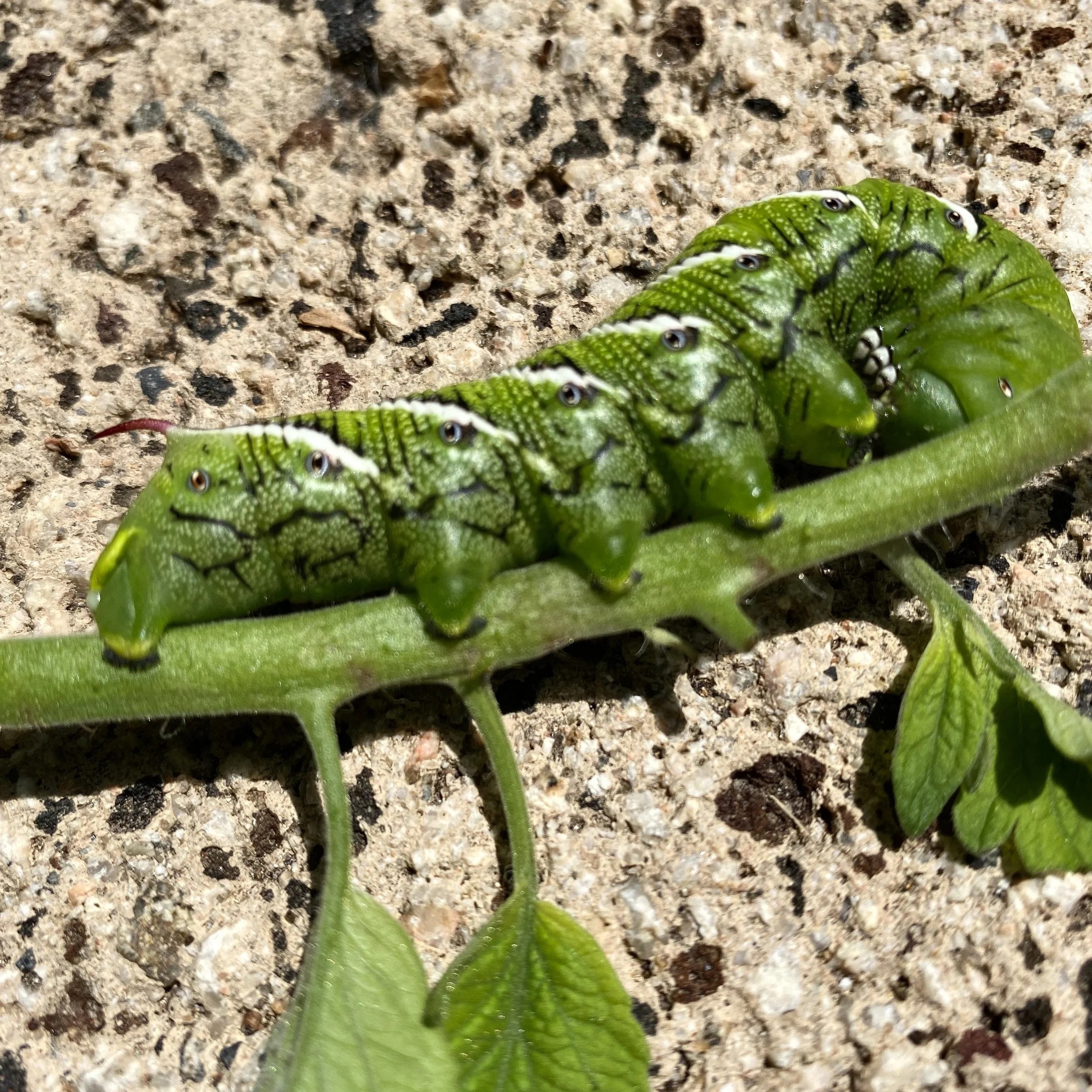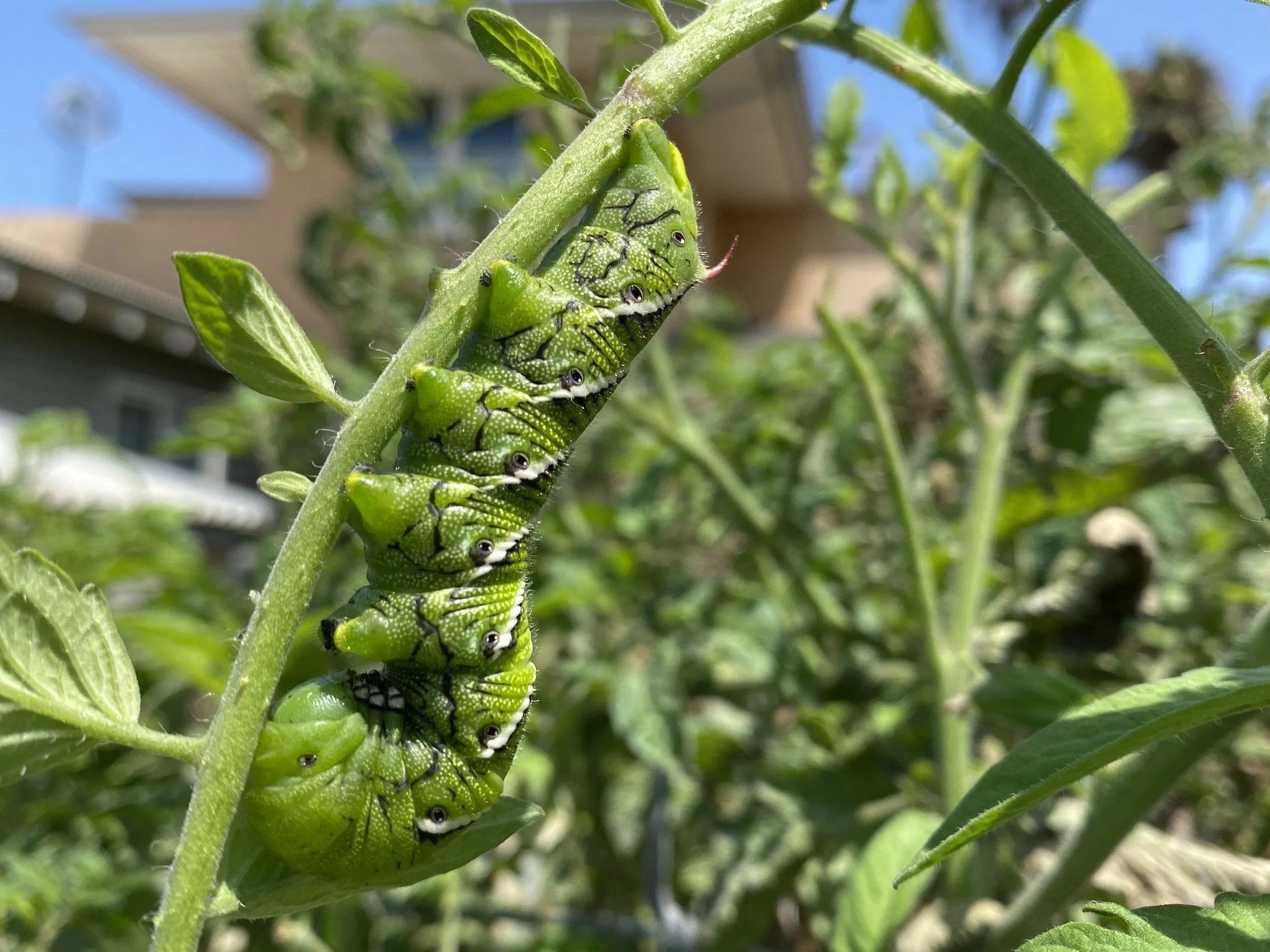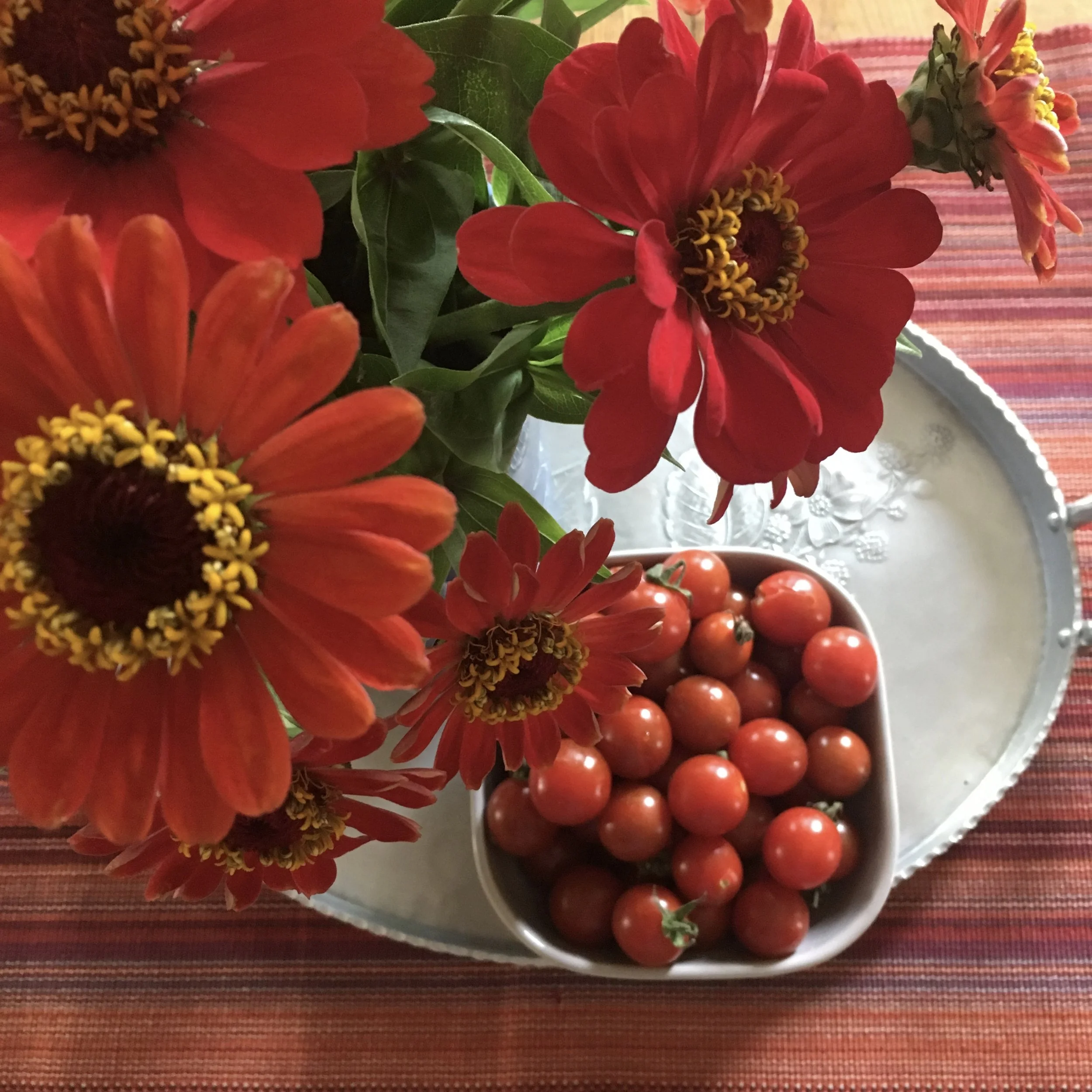Tomato Hornworms, Part 1
Grotesque beauty. The good, the bad and the ugly. Tomato hornworms may fit the last two categories. My most recent post on native bees would be the good. Here’s what garden writer, Barbara Pleasant writes about hornworms:
The most dreaded tomato pests in both of the Americas are tomato hornworms, which become active in early summer, just as tomato plants grow to full size. First you notice part of an outer leaf missing, then a small branch eaten to a nub, or maybe your eyes land on dark green pebbles of caterpillar poo (frass). These are the signs that tomato hornworms have arrived in your garden.
Tomato hornworms and tobacco hornworms are differentiated by the color of their horns. These photos, snapped in my garden, suggests a tobacco hornworm with the red horn. Tomato hornworms sport a blue-black horn.
This photp shows Manduca sexta eggs, larva, pupa and adult moth. (Tobacco hornworm). Source: Kansas State University
Read about organic hornworm controls in these two blogposts, (5 minute read each).
Organic Tomato Hornworm Control
Tomato Hornworms Natural Insect Pest Control
The second article provides a simple “Organic Control Calendar” with suggestions for before planting, at planting time, while crops develop and at harvest. I’ll be looking for the pupa in my garden soil when I uproot my plants at season’s end.
Now on to tomato season. Look for me to drop a light touch on the subject of hornworms in my next post, Tomato Hornworms—Part 2.







